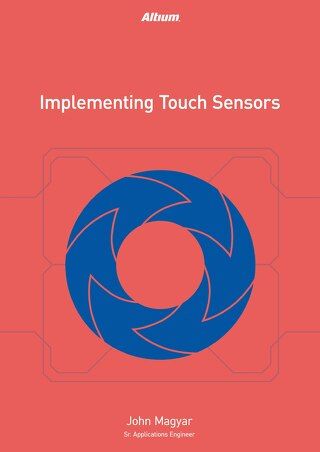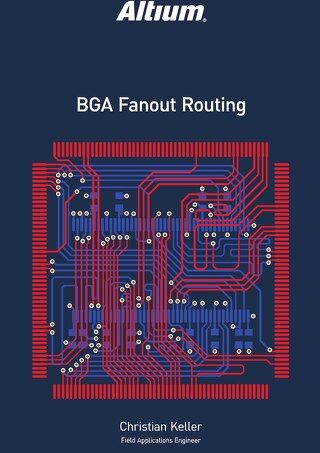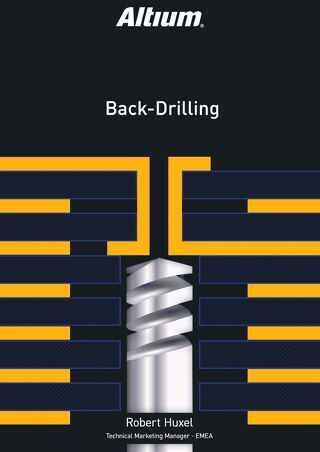Multi-Channel Design with a Flat Project

This paper will show you how to easily replicate circuitry for multi-channel design applications using Altium Designer PCB design software.
You can save yourself plenty of time by reusing existing functional blocks in your PCB, but design reuse is difficult without the right schematic editor. Each schematic you create for your board contains blocks of circuitry that can be connected together, and multi-channel design makes it easy to reuse circuit blocks throughout your PCB design. Altium’s multi-channel design features allow you to reuse identical or nearly-identical circuitry in a simple process within the schematic editor. You can then import repeated circuit blocks into a PCB layout with an integrated schematic capture tool. No other design software provides this level of integration and ease of access to advanced design features.
ALTIUM DESIGNER
The most powerful and easy-to-use PCB design application for for professional use
Working with repeated circuits in your schematics and your PCB layout helps you stay efficient and get through your design quickly. You won’t have to focus on repetitive layout tasks and you can focus on making your board manufacturable. It all takes the right set of PCB design rules and schematic editor tools with multi-channel design features.
Altium Designer’s schematic editor makes it easy to reuse a circuit block in an existing schematic. You link this block in a new schematic and reuse the block as many times as you need. Once you use schematic capture to start your layout, Altium Designer will automatically create a “room” for each iteration of the circuit. You only need to place and route just one of those repeated circuits, and it can be replicated across your design.
What is Multi-Channel Design?
Multi-channel design is a simple idea for design reuse within a schematic sheet. An existing circuit block can be built in one schematic, then it can be defined as an object in another schematic, complete with inputs and outputs. Rather than making copies of your original circuit block in new schematics, you simply use it as you would any other part. You can copy your circuit block into any other schematic and route inputs/outputs between other components.
Hierarchical, Multi-channel PCB Design
With the right PCB design software, you can easily link your schematics together into a larger, coherent structure using multi-channel and hierarchical design techniques. Hierarchical design allows you to define parent and child relationships between schematics, making it easy to embed functionality within a top-level schematic. With multi-channel design, you can easily reuse repeated portions of your schematic, making it easy to create important links between functional blocks in your system.
- Working in unified design software makes schematic design and reuse easy, and it all happens within a single design platform.
Learn more about schematic and design reuse in your PCB design software.
- What used to require multiple design programs with different workflows has now been unified into a single platform. With Altium Designer, circuit reuse and hierarchical design are easy thanks to the unified design environment and the rules-driven design engine.
Learn more about hierarchical and multi-channel design in Altium Designer.
- Whether you need to design a flat or multi-level design hierarchy, Altium Designer’s schematic editor makes circuit reuse quick and easy.

Reusing sections of your design as part of hierarchical schematics
Multi-channel Design and Schematic Capture
Any design that features repeated circuit elements and functional blocks that are part of a hierarchy needs to be put into your PCB layout with a schematic capture tool. Each circuit block needs to be arranged in your PCB layout and needs to be routed to match the arrangement in your schematic sheets. When your schematic editor, schematic capture tool, and PCB editor are placed in a single program, you can quickly arrange repeated circuit blocks and route them quickly.
Use Component Rooms to Layout Repeated Circuit Blocks
Rather than importing from each schematic individually and manually arranging each circuit block, Altium Designer creates “rooms” for each multi-channel circuit block design in your schematics. By grouping components into rules, you can drag-and-drop each circuit block within your PCB layout. This can be done manually by dragging rooms, or by using Design/Rooms/Move Room commands in Altium Designer’s editor features. Additionally, there’s an automated function to arrange them evenly in a grid pattern.
- Forget about exporting multiple schematics from one design tool and trying to reorganize them within a separate PCB schematic editor. Schematic capture is easy when your schematic and layout tools are placed in a single program.
- Defining rooms in your PCB layout from multi-channel designs helps you stay productive and aids DFM.
- Grouping repeated circuit blocks into rooms is the fastest way to arrange blocks of components in your PCB layout.

The repeated circuit blocks in this design can be created using the multi-channel design features in Altium Designer’s schematic editor.
Altium’s Multi-channel Design Features
The industry’s best PCB design software will integrate your PCB editor features, analysis, and documentation tools into a single integrated environment. This gives you total accessibility within one program. Your schematics, layouts, and component data are accessible within a single interface that is built on top of a rules-driven design engine. Altium’s multi-channel design technology allows for easy management of updates, reuse of design data, and project releases to manufacturers.
Altium Designer offers many methods for multi-channel PCB design. Users can set up a project as a hierarchical design and utilize schematic sheet symbols to replicate circuits within the design. Multiple sheet symbols can reference the same underlying schematic document, or a single sheet symbol can be used to instantiate the circuit as many times as needed. This is a very powerful and efficient method of working with multi-channel designs for a flat project.
Altium Designer: Unifying Schematic Design at all Levels
This technology includes a complete design hierarchy that standardizes your design data and allows it to be seamlessly linked and synchronized. Updates to different portions of your design will easily pass between your schematic, layout, and component data, ensuring that your designs remain organized and consistent. No other design software offers this level of integration.
- With Altium Designer, you can work with multi-channel design tools that are placed in a single program. The rules-driven engine ensures all your PCB design tools work together.
- Hierarchical and multi-channel design is a revolutionary design methodology that helps you stay organized and consistent. No other design software helps you stay this productive.
See Altium Designer’s multi-channel design interface in action.
- The underlying rules-driven design engine in Altium Designer allows on-demand electronic rules checking within your schematic and your layouts.
Learn more about defining ERCs in Altium Designer’s schematic editor.

Altium Designer creates a fully unified PCB design environment.
The schematic editor in Altium Designer makes it easy to reuse circuit block with intuitive multi-channel design features. Other design platforms force you to switch between multiple programs or copy circuit blocks between multiple schematics. You’ll have to manage your data in one location, use a PCB editor in another program, and design hierarchical schematics in yet another program. This is not the case with Altium Designer. Everything you need to design PCBs and manage your design data is integrated in a single interface.
Altium Designer on Altium 365 delivers an unprecedented amount of integration to the electronics industry until now relegated to the world of software development, allowing designers to work from home and reach unprecedented levels of efficiency.
We have only scratched the surface of what is possible to do with Altium Designer on Altium 365. You can check the product page for a more in-depth feature description or one of the On-Demand Webinars.










